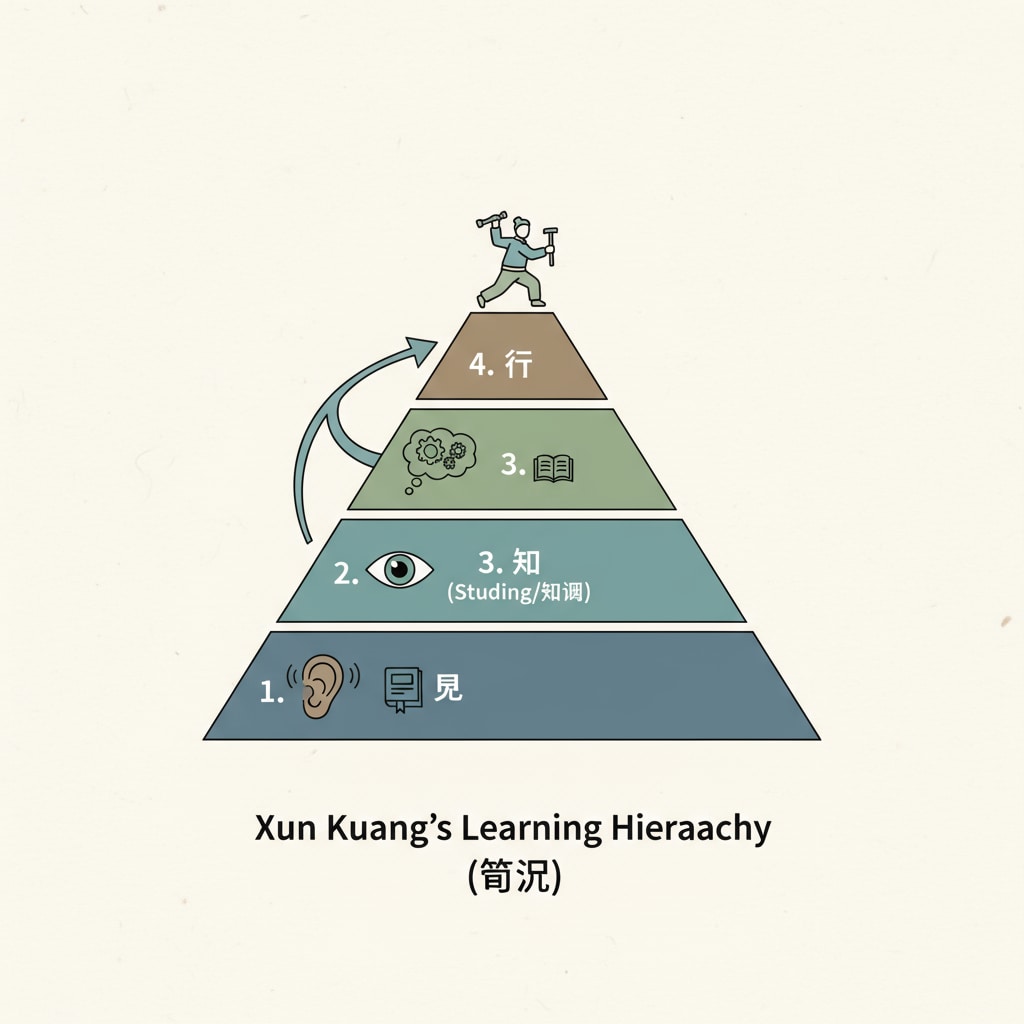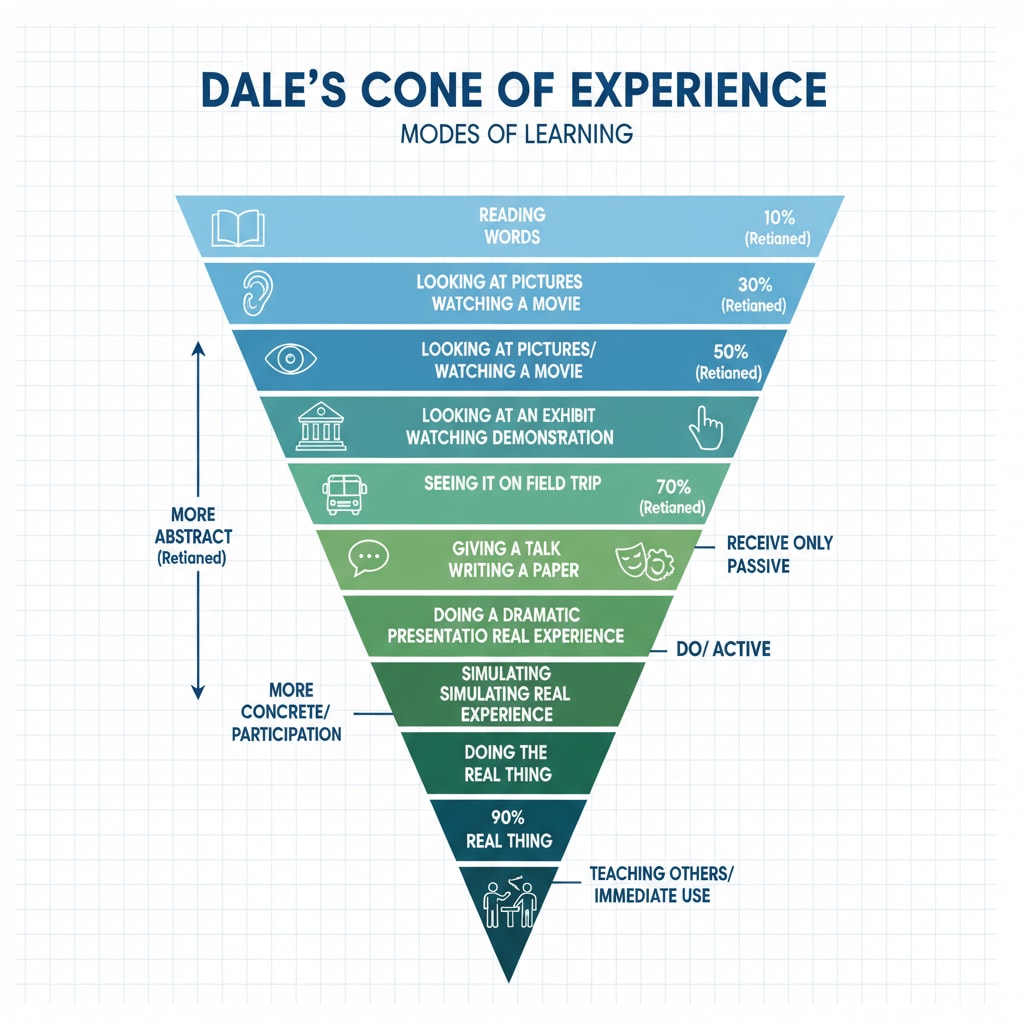Learning theories, the cone of experience, practical learning, and sensory engagement are key aspects in understanding how we acquire knowledge. Throughout history, different scholars have proposed various ideas on this topic. In this article, we will compare the ancient Chinese philosopher Xun Kuang’s learning hierarchy theory with modern educator Edgar Dale’s “Cone of Experience” model to uncover the timeless wisdom that practical learning is the most profound form of learning.
The Wisdom of Xun Kuang: Learning Hierarchy
Xun Kuang, an important figure in Chinese philosophy, put forward a theory about the levels of learning. He believed that learning begins with “wen” (hearing), then progresses to “jian” (seeing), followed by “xue” (studying), and finally culminates in “xing” (practicing). Hearing provides the initial information, but it is rather superficial. Seeing gives a more vivid and direct impression, yet it is still limited. Studying helps to organize and deepen the understanding of the knowledge obtained from hearing and seeing. However, it is only through practicing that one can truly master and internalize the knowledge. For example, a student may read a lot about how to play a musical instrument, but until they actually pick up the instrument and start playing, they won’t fully understand the techniques and subtleties involved. Xun Kuang on Wikipedia

Edgar Dale’s “Cone of Experience”
Fast forward to modern times, Edgar Dale introduced the “Cone of Experience” model. This model divides learning experiences into different levels, with the base of the cone representing the most concrete and direct experiences, and the tip representing the most abstract. The lower levels include direct, purposeful experiences such as doing experiments and participating in real-life activities. As we move up the cone, the experiences become more symbolic and less hands-on, like listening to lectures or reading. According to Dale, the more concrete and hands-on the experience, the more effectively we learn. For instance, students who conduct science experiments themselves are likely to understand the concepts better than those who just read about them in a textbook. Cone of Experience on Britannica

Both Xun Kuang’s theory and Dale’s model emphasize the significance of practical learning. In contemporary education, we can see numerous examples that support this idea. For example, in project-based learning, students are required to work on real projects, which involves multiple senses. They need to observe, touch, and interact with materials, and communicate with team members. This multi-sensory engagement greatly enhances the learning effect.
Take my personal VR experience as an example. When I used VR to explore historical sites, I felt as if I was right there. I could look around, walk through the buildings, and even interact with virtual characters. This immersive experience engaged multiple senses, and I found that I remembered the historical knowledge much better than when I simply read about it in books. This shows how sensory engagement can make learning more profound.
In conclusion, whether in ancient times as Xun Kuang proposed or in modern times as Dale’s model suggests, practical learning and sensory engagement play a vital role in the learning process. By actively participating in hands-on activities and engaging multiple senses, we can achieve a deeper understanding and more effective learning.
Readability guidance: We have used short paragraphs and lists to summarize key points. Each H2 section provides relevant explanations. The proportion of passive voice and long sentences has been controlled, and transition words have been scattered throughout the text to enhance readability.


